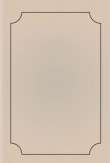You are here
قراءة كتاب The Migrations of an American Boat Type
تنويه: تعرض هنا نبذة من اول ١٠ صفحات فقط من الكتاب الالكتروني، لقراءة الكتاب كاملا اضغط على الزر “اشتر الآن"
the masts, and reefing was accomplished by lowering a sail and tying the reef points while rehoisting. The mast revolved in tacking in order to prevent binding of the sprit under the tension of the heel tackle. The tenon at the foot of the mast was round, and to the shoulder of the tenon a brass ring was nailed or screwed. Another brass ring was fastened around the mast step. These rings acted as bearings on which the mast could revolve.
Because there was no standing rigging and the masts revolved, the sheets could be let go when the boat was running downwind, so that the sails would swing forward. In this way the power of the rig could be reduced without the bother of reefing or furling. Sometimes, when the wind was light, tonging was performed while the boat drifted slowly downwind with sails fluttering. The tonger, standing on the side deck or on the stern, could tong or "nip" oysters from a thin bed without having to pole or row the sharpie.
The unstayed masts of the sharpie were flexible and in heavy weather spilled some wind, relieving the heeling moment of the sails to some degree. In summer the 35-to 36-foot boats carried both masts, but in winter, or in squally weather, it was usual to leave the mainmast ashore and step the foremast in the hole just forward of the bulkhead at the centerboard case, thereby balancing the rig in relation to the centerboard. New Haven sharpies usually had excellent balance, and tongers could sail them into a slip, drop the board so that it touched bottom, and, using the large rudders, bring the boats into the wind by spinning them almost within their length. This could be done because there was no skeg. When sharpies had skegs, as they did in some localities, they were not so sensitive as the New Haven boats. If a sharpie had a skeg, it was possible to use one sail without shifting the mast, but at a great sacrifice in general maneuverability.
 FIGURE 6.—North Carolina sharpie with one reef in moderate gale, about 1885.
FIGURE 6.—North Carolina sharpie with one reef in moderate gale, about 1885.(Photo courtesy Wirth Munroe.)
Kunhardt[5]writing in the mid-1880's, described the New Haven sharpie as being 33 to 35 feet long, about 5 feet 9 inches to 6 feet wide on the bottom, and with a depth of about 36 inches at stem, 24 inches amidships, and 12 inches at stern. The flare increased rapidly from the bow toward amidships, where it became 3½ inches for every 12 inches of depth. The increase of flare was more gradual toward the stern, where the flare was equal to about 4 inches to the foot. According to Kunhardt, a 35-foot sharpie hull weighed 2,000 to 2,500 pounds and carried about 5 short tons in cargo.
The sharpie usually had its round stern carried out quite thin. If the stern was square, the transom was set at a rake of not less than 45°. Although it cost about $15 more than the transom stern, the round stern was favored because tonging from it was easier; also, when the boat was tacked, the round stern did not foul the main sheet and was also less likely to ship a sea than was the square stern. Kunhardt remarks that sharpies lay quiet when anchored by the stern, making the ground tackle easier to handle.
 FIGURE 7.—Plan of a Chesapeake Bay terrapin smack based on sketches and dimensions given by C. P. Kunhardt in Small Yachts: Their Design and Construction, Exemplified by the Ruling Types of Modern Practice, New York, 1886.
FIGURE 7.—Plan of a Chesapeake Bay terrapin smack based on sketches and dimensions given by C. P. Kunhardt in Small Yachts: Their Design and Construction, Exemplified by the Ruling Types of Modern Practice, New York, 1886.The cost of the New Haven sharpie was very low. Hall stated that in 1880-1882 oyster sharpies could be built for as little as $200, and that large sharpies, 40 feet long, cost less than $400.[6]In 1886 a sharpie with a capacity for 150 to 175 bushels of oysters cost about $250, including spars and sails.[7]In 1880 it was not uncommon to see nearly 200 sharpies longside the wharves at Fairhaven, Connecticut, at nightfall.
The speed of the oyster sharpies attracted attention in the 1870's, and in the next decade many yachts were built on sharpie lines, being rigged either as standard sharpies or as sloops, schooners, or yawls.
Oyster tonging sharpies were raced, and often a sharpie of this type was built especially for racing. One example of a racing sharpie had the following dimensions:
| Length: | 35' | |
| Width on deck: | 8' | |
| Flare, to 1' of depth: | 4' | |
| Width of stern: | 4-1/2' | |
| Depth of stern: | 10" | |
| Depth at bow: | 36" | |
| Sheer: | 14" | |
| Centerboard: | 11' | |
| Width of washboards or sidedecks: |
12" | |
| Length of rudder: | 6' | |
| Depth of rudder: | 1'2" | |
| Height of foremast: | 45' | |
| Diameter of foremast: | 6" | |
| Head of foremast: | 1-1/2" | |
| Height of mainmast: | 40' | |
| Diameter of mainmast: | 5-1/2" | |
| Head of mainmast: | 1-1/2" |
The sharpie with the above dimensions was decked-over 10 feet foreward and 4 feet aft. She carried a





